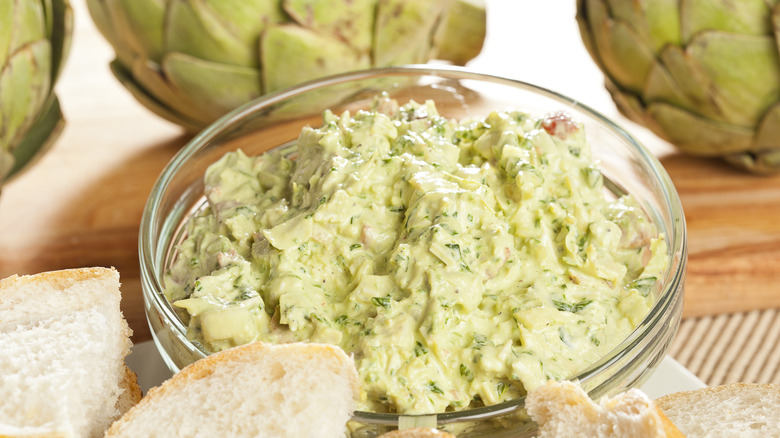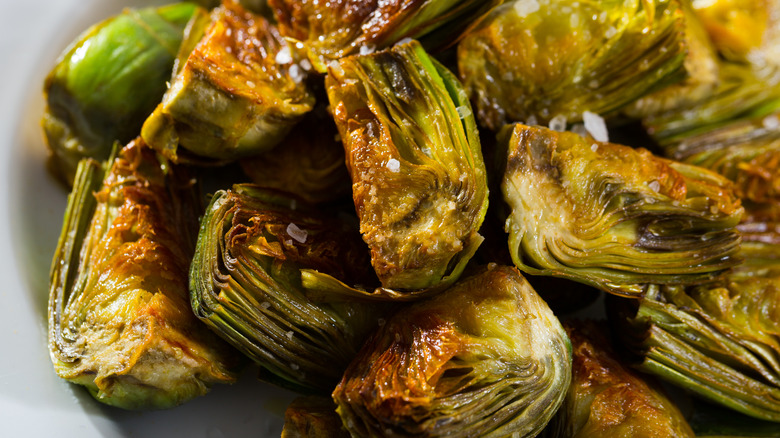The Major Differences Between Frozen And Canned Artichokes
Artichokes can be an intimidating vegetable to work with — tough on the outside with a fibrous choke in the middle. Getting to the good parts requires time and effort. While a whole steamed artichoke or smoky grilled artichoke halves are occasionally worth the struggle, there are much easier ways to get our favorite thistle into dips or salads: either from a can or the freezer section of your local grocery store.
Both canned and frozen artichokes have the advantage of being available year-round and both have long shelf lives, so you can stock up and have them on hand for when the craving strikes. Both can be used in a variety of dishes, including salads, dips, pasta sauces, and casseroles. However, the choice between the two often depends on the desired texture and flavor profile of the final dish. Canned artichokes, with their softer texture and slightly salty taste, are well-suited for recipes where they are meant to meld into the background flavors, such as dips or spreads. On the other hand, frozen artichokes, with their firmer texture and fresher taste, work best in dishes where they are intended to be a prominent ingredient, such as salads or pasta dishes.
Canned artichokes have a softer texture
Canned and jarred artichokes are preserved in water or brine and have a long shelf life, so you can stock up and have them on hand whenever needed. The canning process involves cooking the artichokes at high temperatures, which helps soften their tough exterior and renders them tender enough to be eaten straight from the can. That soft texture can be advantageous in certain dishes where a melt-in-your-mouth consistency is desired, but it may not appeal to those who prefer a firmer bite. Additionally, canned artichokes often absorb some of the brine or marinade they are packed in, which can alter their flavor profile and make them slightly salty.
Because canned artichokes are fully cooked, they're a snap to use: Simply open the container. If they've been marinated in olive oil and herbs, you can put them right onto a grazing platter or drain them and toss them in salads or dip recipes. Brined artichokes should get a quick rinse after draining. Most canned artichokes are hearts with their tender interior leaves still attached, but you can also find meaty artichoke bottoms. If you don't love the fibers in the leaves, it's worth searching out the bottoms, which have no leaves attached.
Frozen artichokes are firmer with less water content
On the other hand, frozen artichokes go from the field to the freezer almost immediately after harvesting and cooking, allowing them to retain much of their freshness and nutritional value. The freezing process helps preserve the artichokes' natural texture, resulting in a firmer bite compared to their canned counterparts. This firmer texture makes frozen artichokes ideal for dishes where distinct artichoke pieces are desired.
Frozen artichokes retain their natural flavor without the added salt or preservatives often found in canned varieties. This allows the true essence of the artichoke to shine through in dishes. The lack of extra moisture makes frozen artichokes perfect for recipes when you'd like an extra crisp result, like fried artichokes or when you're including them in baked goods and don't want a watery result. Like their canned cousins, frozen artichokes can be found as artichoke hearts or bottoms, giving you ultimate flexibility in creating the artichoke recipe of your dreams.


